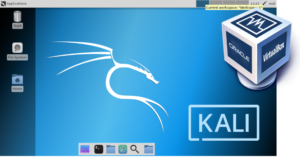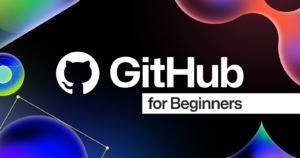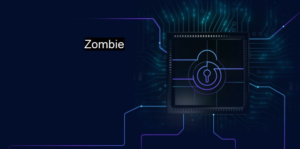
Introduction to Microsoft Copilot
Microsoft Copilot represents a significant advancement in the realm of artificial intelligence, specifically designed to enhance productivity across various tasks. Developed by Microsoft, this innovative tool integrates seamlessly into the suite of applications that millions use daily, including popular software such as Word, Excel, and PowerPoint. The purpose of Copilot is to assist users by automating mundane tasks, providing intelligent suggestions, and facilitating more creative endeavors through advanced AI capabilities.
At its core, Copilot leverages the power of AI to streamline workflows and enhance user efficiency. The technology behind it includes large language models and machine learning algorithms, enabling it to understand context and offer contextual help. For instance, when users are engaged in a writing task, Copilot can suggest edits, generate content ideas, or even draft full paragraphs, making the creative process smoother and less time-consuming. This advancement in AI technology underscores Microsoft’s commitment to providing robust features that not only address but anticipate user needs.
The integration of Microsoft Copilot into everyday applications marks a pivotal shift in how professionals approach their daily tasks. By harnessing AI, users can optimize their workflow, reduce time spent on repetitive activities, and ultimately improve productivity. Furthermore, the development of this tool reflects the growing importance of AI, like ChatGPT, in the workplace. As organizations increasingly turn to intelligent solutions, the role of Copilot in enhancing collaborative efforts and decision-making processes becomes essential, driving companies forward in a competitive landscape. In conclusion, Microsoft Copilot not only exemplifies the capabilities of artificial intelligence but also highlights the potential of integrating smart technologies into our daily lives for greater efficiency and creativity.

Features of Microsoft Copilot
Microsoft Copilot stands out as a cutting-edge artificial intelligence solution designed to streamline daily tasks and enhance productivity for individuals and teams alike. One of its most significant features is its content generation capability, which utilizes advanced algorithms to produce high-quality text based on user input. This function is particularly beneficial for those who spend considerable time drafting documents, emails, or reports, as it can significantly reduce the amount of time required to generate relevant and coherent content. In addition, Copilot is equipped with tools that facilitate editing and give suggestions for improvements, thereby enhancing the overall quality of the written output.
Another notable functionality of Microsoft Copilot is its ability to automate repetitive tasks. By utilizing intelligent automation, users can delegate menial responsibilities to the AI, which allows them to focus their energy on more strategic and creative aspects of their work. For example, Copilot can help schedule meetings, prepare summaries of discussions, or even manage email workflows, all of which contribute to increased efficiency in professional settings.
Furthermore, Microsoft Copilot fosters collaboration by acting as a supportive partner in real-time projects. With its robust integration capabilities with Microsoft applications, users can leverage Copilot to enhance teamwork and communication. Whether through brainstorming ideas or providing context-based suggestions during collaborative efforts, Copilot serves as a bridge that encourages constructive dialogue and collaboration among team members. This assists in developing a balanced work environment where creativity and productivity go hand in hand, proving that artificial intelligence can facilitate and augment human capabilities effectively.
How Copilot Works: A Technical Perspective
Microsoft’s Copilot leverages advanced machine learning techniques and artificial intelligence to create a seamless user experience across its applications. At the core of this innovative tool lies natural language processing (NLP), a field of AI that focuses on the interaction between computers and human language. This capability allows Copilot to understand context, respond to user inquiries, and generate relevant content tailored to specific tasks. For instance, when users interact with Copilot, it can interpret commands and provide suggestions that effectively enhance their productivity.
The underlying algorithms of Copilot utilize vast datasets, learned patterns, and contextual knowledge drawn from extensive interactions. As users employ the software for daily tasks, such as document editing in Microsoft Word or spreadsheet analysis in Excel, Copilot continuously adapts and improves its suggestions based on user behavior. This iterative process ensures that the AI remains relevant and responsive to varying requirements, ultimately leading to a more intelligent and efficient assistant.
Moreover, a significant aspect of Copilot’s technology is its ability to integrate data from various sources. By connecting with cloud services and utilizing Microsoft Graph, the AI can draw insights from a multitude of applications, helping users make informed decisions quickly. Additionally, security and privacy remain critical considerations in this process. Microsoft employs robust cybersecurity measures and privacy controls to ensure that sensitive information is protected while maximizing the utility of their AI technologies.
Through continuous learning and data processing, Copilot exemplifies how organizations can leverage artificial intelligence to boost efficiency across their operations. As users explore its capabilities, the AI’s potential to enhance productivity becomes increasingly evident—demonstrating how it can simplify complex tasks and ultimately position itself as an invaluable tool for modern workflows.
Use Cases for Microsoft Copilot
Microsoft Copilot, an innovative artificial intelligence tool, is designed to enhance productivity across various industries and daily tasks. By harnessing the power of Microsoft AI, businesses can effectively streamline their operations and address complex challenges with ease. For instance, in the healthcare sector, Copilot can assist professionals by efficiently managing patient records and providing personalized care recommendations through advanced data analysis.
In the realm of marketing, teams can utilize Copilot to generate impactful content and strategize campaigns. By understanding audience preferences, the AI can help craft tailored messages that resonate with potential customers, ultimately driving engagement and conversions. This advanced technology not only fosters creativity but also saves time, allowing marketers to focus on high-level strategies rather than mundane tasks.
In the field of finance, Copilot can provide valuable insights into market trends and help analysts make informed decisions. By automating data retrieval and visualization, financial professionals can dedicate more time to strategic planning. Furthermore, Copilot’s predictive capabilities can identify potential risks and opportunities, thereby enhancing overall security in financial operations through improved cyber defense measures.
Educators can also leverage Microsoft Copilot to personalize learning experiences for students. The AI can assist in generating tailored lesson plans and resources that cater to individual learning styles. Additionally, Copilot can help students with their research by summarizing large volumes of information and providing context, thereby making learning more efficient and engaging.
Overall, the implementation of Microsoft Copilot across these diverse sectors exemplifies how artificial intelligence can significantly improve workflow, generate innovative ideas, and tackle intricate problems. As organizations continue to explore ways to integrate this technology into their daily tasks, the potential benefits of enhanced productivity and security will be increasingly recognized.
User Experience and Interface Design

Microsoft Copilot represents a significant advancement in artificial intelligence applications, enhancing users’ daily tasks through a thoughtfully designed interface. The user experience is anchored around principles that prioritize usability, accessibility, and intuitiveness. At its core, Microsoft aimed to create an environment where individuals of varying skill levels can comfortably navigate the technology, making it a versatile tool across diverse sectors.
The interface of Copilot has been designed with simplicity in mind. Users are greeted with a clean layout that minimizes distractions, allowing them to focus on their tasks. Key features are highlighted prominently, ensuring that even those less familiar with artificial intelligence tools can quickly identify how to utilize them effectively. The use of consistent icons and a logical flow of interactions aids in reducing cognitive load, guiding users seamlessly through their processes.
Accessibility is a fundamental consideration in the design of Microsoft Copilot. Recognizing that users have different needs, the platform offers features such as adjustable text sizes, high-contrast modes, and screen reader compatibility. This commitment to inclusivity ensures that all users, including those with disabilities, can leverage the powerful capabilities of AI, including functionalities similar to ChatGPT, to enhance their productivity.
Moreover, Microsoft’s emphasis on user feedback in the design iteration process has been crucial. This approach allows for continual refinement, addressing pain points expressed by users in real-time scenarios. By integrating user suggestions and insights, Copilot evolves to meet the demands of its audience, striving to be not only an assistant in carrying out tasks but also a vital partner in their everyday workflows.
In conclusion, the user interface and overall experience of Microsoft Copilot embody a careful blend of design principles aimed at enhancing usability and accessibility, ensuring it serves as an effective AI solution for all users.
Haxygen’s Research Documentation on Copilot
Haxygen has embarked on an extensive examination of Microsoft’s AI solution, Copilot, analyzing the efficacy and innovation it introduces to users’ daily tasks. The research employed a mixed-methods approach, incorporating both qualitative and quantitative analyses. The qualitative aspect involved in-depth interviews with users and AI specialists, while the quantitative facet analyzed performance data across various applications powered by Microsoft’s AI capabilities.
One of the pivotal methodologies included case studies focusing on how Copilot assists users with routine tasks, offering a clearer picture of its integration within familiar platforms such as Windows and Office applications. The findings revealed that Copilot significantly helps in streamlining workflows, improving productivity, and enhancing overall user satisfaction. In particular, users reported that the AI-driven suggestions enabled them to focus on creative aspects of their work, thus optimizing their time management.
Moreover, the research addressed critical security concerns, as AI technologies can pose risks if not properly managed. Haxygen’s documentation highlighted the robust security measures implemented by Microsoft in the development of Copilot, aiming to protect user data while simultaneously providing effective AI-driven assistance. By analyzing user experiences, the research noted that Copilot employs advanced algorithms that prioritize security without compromising functionality, serving as a model for future AI systems.
Additionally, the implications of these findings suggest that the integration of AI tools like Copilot will reshape various industries by enhancing task management capabilities. As organizations explore ways to incorporate artificial intelligence into their operations, the insights provided by Haxygen’s research will be essential in guiding the development of AI solutions. It underscores the necessary balance between innovation and security, emphasizing that Microsoft’s approach in Copilot is a forward-thinking model for future AI advancements.
Pros and Cons of Using Copilot
In the ever-evolving landscape of technology, artificial intelligence plays a pivotal role in improving efficiency in daily tasks. Microsoft Copilot serves as a comprehensive AI solution designed to assist users in navigating various applications and enhancing productivity. One of the primary advantages of Microsoft Copilot is its ability to significantly increase efficiency. By automating routine tasks, the software enables users to focus on more strategic activities, thereby leveraging their time effectively. The integration of AI with tools like ChatGPT allows users to accomplish complex tasks with ease, making Copilot a valuable asset in any professional environment.
Another noteworthy benefit of using Copilot is its user-friendly interface, which ensures that users, irrespective of their technical expertise, can utilize the features without extensive training. This adaptability makes it suitable for a wide range of users, from those in corporate settings to individuals handling personal projects. Additionally, since it is rooted in Microsoft’s ecosystem, it seamlessly integrates with Windows and other Microsoft applications, facilitating a smooth workflow across platforms.
However, while the advantages are apparent, there are potential pitfalls associated with employing AI solutions like Copilot. Over-reliance on the technology may lead to diminished critical thinking skills and problem-solving abilities among users. Moreover, there are security considerations to keep in mind, particularly regarding data privacy and the potential for cyber threats. Utilizing AI for daily tasks necessitates an understanding of how data is processed and stored, urging users to explore the security measures implemented by Microsoft.
In conclusion, while Microsoft Copilot offers remarkable efficiencies and a robust support system for everyday tasks, it is essential for users to remain cognizant of both its advantages and drawbacks. Balancing the benefits of AI tools with mindful utilization is key to maximizing their effectiveness while ensuring ethical and secure practices in the workspace.
Future Directions: What’s Next for Copilot?
The trajectory of artificial intelligence (AI) technology is rapidly evolving, and Microsoft’s Copilot is positioned to be at the forefront of this revolution. As businesses increasingly rely on AI solutions to streamline operations and daily task management, Copilot aims to enhance productivity through seamless integration of advanced tools such as ChatGPT. This AI-driven assistant is expected to not only support users in their current workflows but also grow in capabilities, responding to emerging needs.
One major area of development for Microsoft Copilot is the incorporation of enhanced security measures. As cyber defense becomes a paramount focus for organizations, the integration of robust security protocols within Copilot will play a critical role. Ensuring that user interactions and data remain secure is vital as AI systems become more intricate and widely adopted. With Microsoft investing in innovative security technologies, Copilot can redefine how organizations manage sensitive information while utilizing AI to support decision-making processes.
In line with evolving trends in AI technology, future iterations of Copilot may include more adaptive learning algorithms that can adjust to user preferences and workplace environments. This would allow for a more intuitive experience, wherein Copilot not only assists with daily tasks but also anticipates users’ needs. Feedback from users will play a pivotal role in shaping these enhancements. By actively engaging with the community, Microsoft can align the development of Copilot with real-world applications and challenges faced by users.
Ultimately, the future of Microsoft Copilot as an AI solution lies in its ability to adapt and grow in response to user feedback and market demands. With features that prioritize security, user-friendliness, and advanced functionality, Copilot stands to revolutionize the way organizations leverage artificial intelligence in their everyday operations.
Conclusion: Embracing AI with Microsoft Copilot
As we draw our exploration of Microsoft Copilot to a close, it is essential to reflect on the profound implications this artificial intelligence tool has on productivity, creativity, and the integration of AI in our daily tasks. Microsoft Copilot exemplifies a significant advancement in AI technology, showcasing how intuitive interactions with artificial intelligence can enhance our work processes. By incorporating tools like ChatGPT, which utilizes sophisticated robotic algorithms, Microsoft has made strides in enabling users to engage with their software in ways that were previously unimaginable.
The deployment of Copilot not only promotes efficiency but also fosters creativity within professional environments. Users are empowered to explore new solutions and workflows through enhanced collaboration with AI, leading to innovative approaches to everyday projects. For individuals and teams alike, the daily tasks that once consumed substantial time can now be managed effectively with the assistance of Microsoft’s AI-driven tools. As a result, professionals can redirect their focus from mundane activities to more strategic planning and creative endeavors.
Moreover, in the context of security, Microsoft’s commitment to AI-driven cyber defense solutions, such as those integrated within Windows, ensures that users can operate with heightened confidence. The AI capabilities underpinning Copilot and other Microsoft products provide a robust mechanism for safeguarding sensitive information, addressing potential threats through intelligent predictions and automated responses. This is vital as the complexities of our technological landscape continue to evolve, and organizations increasingly rely on sophisticated forms of artificial intelligence to navigate these challenges.
In summary, the introduction of Microsoft Copilot represents a landmark moment in how we interact with technology. By embracing AI, we are not only enhancing productivity and creativity but also paving the way for a future where artificial intelligence becomes an indispensable partner in our daily decision-making processes.





